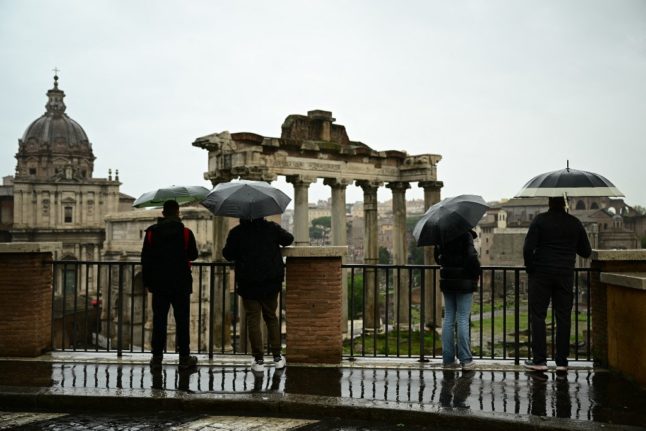With the long weekend now just around the corner, forecasts appear to once again confirm the ‘wet Easter’ trend of recent years as many Italian regions are expected to see rain and below-average temperatures over the holidays.
According to the latest reports, cold air currents from northern Europe will reach the country on Friday, bringing moderate showers and daytime temperatures between 13C and 16C to the north-west of the boot and Tuscany.
The cold air front will move down along the peninsula on Saturday, when all central regions along with Campania, Puglia and Basilicata will see localised showers of medium intensity, with daytime temperatures dropping as low as 10C in some areas.
Conditions should be good in the north, though Veneto and Friuli might register some showers in the afternoon.
Meteo Liguria, le previsioni per Pasqua e Pasquetta https://t.co/2L1FQqrGkJ pic.twitter.com/Nyc2jhNE87
— Genova Today (@genovatoday) April 4, 2023
The situation is currently expected to worsen on Easter Sunday, with all central and southern regions forecast to see some rain during the day. Rainstorms might be particularly intense in Calabria and Campania, with some areas potentially affected by hailstorms, especially in the afternoon.
READ ALSO: What will Italian roads look like over Easter weekend?
Temperatures will remain below average across the entire country, with thermometers in several regions of the boot expected to drop below the 10C mark at night.
Weather conditions should improve on Easter Monday (Pasquetta), though some isolated rain showers might persist in Calabria, Puglia, Basilicata and eastern Sicily.
The rest of the country will enjoy clear skies on the day, but temperatures around the peninsula will largely remain below season averages, with Bolzano alone expected to record 20C or more on the day.




 Please whitelist us to continue reading.
Please whitelist us to continue reading.
Member comments